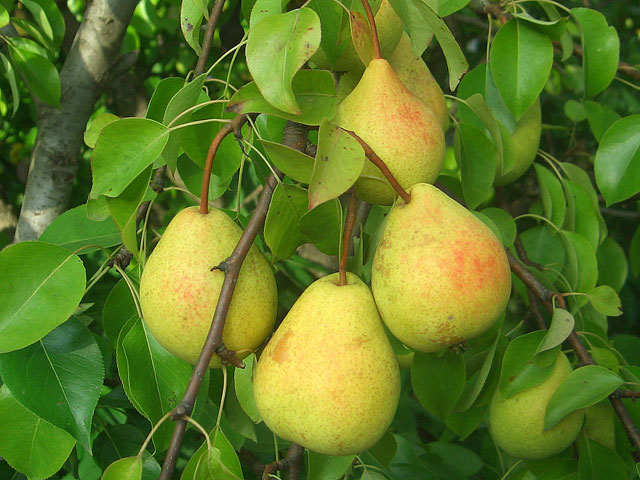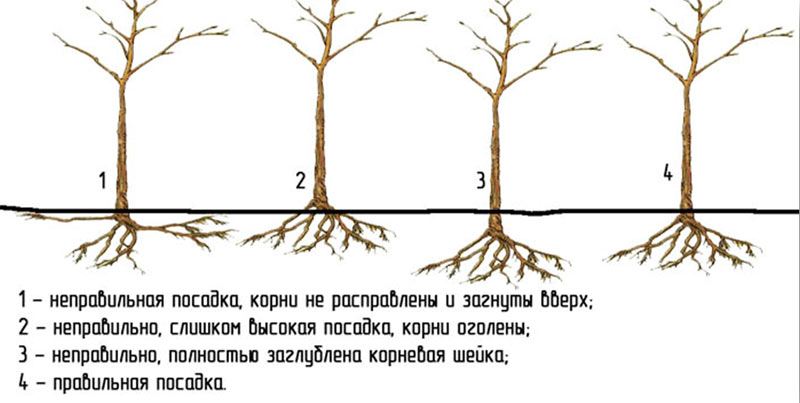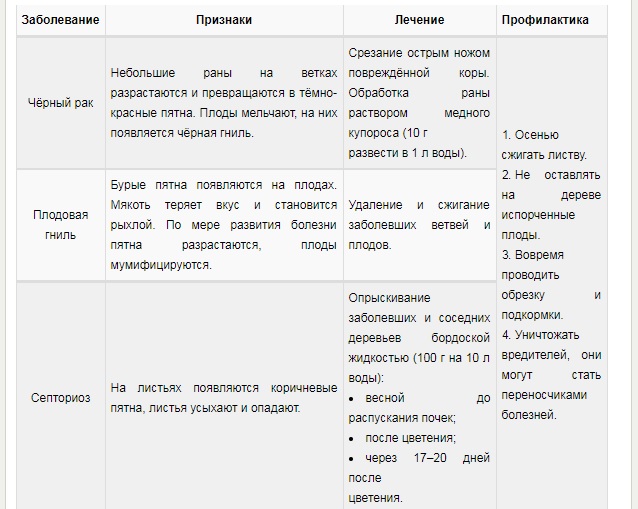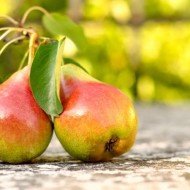High-yielding pear Veles: tips for growing
Content
- 1 The history of the origin of the Veles variety
- 2 Characteristics and description of a winter-hardy variety
- 3 Video "Acquaintance with the Veles pear"
- 4 Advantages and disadvantages of the variety
- 5 Features of growing pear Veles
- 6 Prevention of diseases and pests
- 7 Reviews of gardeners about the Veles variety
The history of the origin of the Veles variety
The pear appeared as a result of crossing two wonderful varieties - Venus and Forest Beauty.
The forest beauty is the basis of many excellent varieties, from which the culture inherits winter hardiness, a high degree of productivity and tasty fruits. No less important qualities - productivity and simplicity of cultivation - were inherited by Veles from Venus.

Yu. A. Petrov and NV Efimova from the All-Russian Institute of Selection and Technology of Horticulture and Nursery worked on the selection of the variety. In the State Register of Breeding Achievements of the Russian Federation, the culture was registered in 2001. Recommended growing regions - Moscow and central regions.
Characteristics and description of a winter-hardy variety
Already from the photo of the tree and fruits, you can see that the pear receives rave reviews for a reason. At exhibitions, the fruits of Veles usually receive the highest scores.
Botanical portrait
A medium-sized tree with a spreading, well-leafy crown reaches its maximum height by about 10 years. It is rare to find Velesa higher than 4 m. The shape of the crown is broad-pyramidal, over time, even vertically growing shoots droop. Branches are cherry brown with rather large ringlets.
The leaves are oblong, medium in size, with a glossy facial structure. Color - from bright to rich green. The leaf is slightly bent towards the inner side; a slight serration can be seen at the edges.

Fruits are considered to be medium-sized, the usual weight is from 120 to 170 g. Specimens weighing about 200 g are less common. The shape is correct, wide pear-shaped, slightly sloping, but without ribbing. The skin of the fruit is even, smooth and clean, greenish-yellow in color, with a slight reddish coating.
Velesa fruits belong to the dessert type and are not inferior to good southern varieties. The pulp is juicy, of medium density, with a semi-oily structure. The aroma and taste are very delicate, sour-sweet.
Drought and frost resistance
When growing Velesa in the central regions, additional watering is not required - the pear has enough natural precipitation.
Velesa does not tolerate drought well, which immediately affects the quality and quantity of fruits.
In terms of winter hardiness, the variety can be compared with the old Russian frost-resistant varieties. It can withstand frost down to -35 ° C. However, late spring frosts below -2 ° C can damage the kidneys.
Pollinators varieties
The hybrid is partly self-fertile. However, in order to improve the quality of the fruit and the degree of yield, it is necessary to take care of the right pollinators. Such varieties as Rogneda, Chizhovskaya and Severyanka are perfect. In some sources, the partial self-fertility of the variety is not mentioned.
- Rogneda
- Chizhovskaya
- Severyanka
Ripening and fruiting dates
The variety does not differ in early maturity, the first fruits appear no earlier than 5 years after planting, and even later. Fruits ripen at the beginning of autumn, but they are recommended to be harvested slightly unripe.
Yield indicators
Veles bears fruit abundantly and regularly. The average yield is about 80 kg of fruit per tree. Under conditions of industrial cultivation - up to 126 c / ha.
Collection, storage and use of the crop
They usually harvest in two passes: first, at the end of August, smaller fruits, a little later - large ones. Pears are not fully ripe plucked to prolong storage and consumption.
The fruits are stored in a cool dry room, in ventilated boxes.
In addition to being eaten fresh, pears are suitable for making jams, compotes, baking fillings and culinary sauces.
Commercial and taste qualities of fruits
The fruits have not only an attractive appearance, but also a high degree of transportability. Excellent taste and juiciness allow the pear to receive high quality marks.
Video "Acquaintance with the Veles pear"
This video presents the commercial and taste qualities of the fruit crop.
Advantages and disadvantages of the variety
- the ability to quickly adapt to the conditions of the growing region and a high degree of cold resistance;
- immunity to common diseases and fungal infections;
- excellent marketability and taste of fruits;
- taste is preserved after processing, so they can be consumed in any form;
- fruits have a rich chemical composition, which includes useful substances and trace elements necessary for the body;
- can be grown not only on private farms, but also on an industrial scale.
- freezing of the kidneys with strong recurrent frosts;
- crushing of fruits with thickening of the crown and a lack of moisture;
- late start of fruiting.
We advise you to take care of adequate care for Veles, and then the first two minuses will not exist.
Features of growing pear Veles
Agrotechnical procedures for a tree are no different from a standard set of planting and care measures. But, of course, there are small nuances.
General landing rules
The planting scheme is standard: preparation of a pit, about a meter in diameter and depth, preparation of a fertile mixture, sapling garter and watering. However, you should consider the following points:
- before planting, you need to shorten the branches and roots of the seedling;
- separation of the fertile soil layer from the infertile one;
- the peg must be hammered in the center of the pit so that it reaches the middle of the tree trunk;
- the seedling is firmly tied to the peg only after watering, when the earth has completely subsided.

Care advice
- The crown of a pear can form on its own, but you should not allow the crown to thicken. In addition, sanitary pruning should not be neglected: all dry, damaged, improperly growing and diseased branches must be removed.
- In the first years after planting, the tree needs regular watering. Therefore, it must be watered at least several times a month. But it is imperative to be guided by the amount of precipitation.
- Growing pears in infertile soils requires regular annual feeding. On fertile soils, pears are fed infrequently, once every few years.
- The pear does not need shelter for the winter when grown in the zoning zone. However, in conditions of harsh long winters, it is better to take care of insulation.

Prevention of diseases and pests
The variety has a high degree of resistance to diseases and pests. However, violation of the rules for care can provoke their appearance. This can be avoided with the help of simple preventive measures, namely, timely spring treatment with copper-containing preparations and insecticides. Bordeaux liquid, copper sulfate, "Decis" and "Fufanon" will perfectly cope with this task.

Reviews of gardeners about the Veles variety
“I have been growing pears for many years. 12 years ago I bought a Velesa sapling. I was so pleased with the result that after 7 years I bought 4 more trees. It is unpretentious in care, gives a bountiful harvest, tasty and long-stored fruits. "
“Veles was recommended to us by our neighbors, as soon as we bought a summer cottage and began to“ rejuvenate ”the garden. They gave us a seedling for housewarming. Honestly, better than a gift and not come up with. We eat pears not only until the beginning of winter, but we also enjoy preservation until the next harvest. "
“I have been fond of fruit crops since my youth. Velesa sapling purchased at an agricultural exhibition. The pear has been bearing fruit for 2 years. I am very pleased with the successful purchase. "
If the conditions of the region allow, be sure to allocate a place for Veles. And we are sure that the pear will thank you with a delicious and generous harvest for good care and care.



